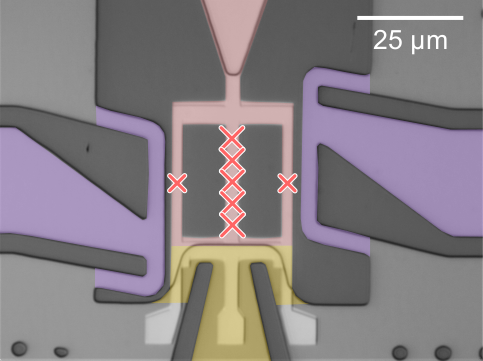By replacing the classical 0/1 logic of today’s processors (bits) with that of qubits (quantum bits) based on superposition and entanglement, we theoretically obtain a “universal quantum machine” capable of considerably reducing the execution time of certain algorithms (optimization problems, machine learning, cryptography methods, etc.).
The dual challenge of quantum computing is, on the one hand, to have a large number of “physical” qubits robust to decoherence, and on the other, to design the architecture and protocols to use them as efficiently as possible. The qubits can be made from a wide variety of physical systems (ions, photons, cold atoms, superconductors, semiconductors), the challenge being to drive them rapidly without external disturbances considerably reducing computational fidelity.
Several quantum computation models have been developed, as well as information encoding strategies enabling error correction through redundancy, with one logical qubit being represented by several physical qubits. The construction of a quantum computer is therefore an interdisciplinary effort involving physics, applied mathematics, computer science and instrumentation.
At present, the first so-called “Noisy Intermediate-Scale Quantum” (NISQ) machines, of the type implemented by Google or IBM, use a moderate number of imperfectly controlled qubits (faithful gates to within 1%). They require optimization of the architecture specific to the physical platform. Analysis of the algorithms associated with these imperfect machines in turn inspires new ideas for classical simulation. In the longer term, the realization of a universal quantum computer of large size and long computation times will require the introduction of error correction. These techniques require gate fidelity on the basic platform of over 99%, and are complex and resource-intensive, making any simplification of existing architectures highly valuable. For the programming of these universal machines, while some algorithms such as the Quantum Approximate Optimization Algorithm (QAOA) have become established, many still lack full proof of quantum acceleration, and others are undoubtedly yet to be discovered. Characterizing the fundamental possibilities and limits of the ideal quantum computer is therefore a very active area of research.
Paris Region laboratories are contributing to this quest at all levels through excellent fundamental research (Figure 1). In their wake, recent startups such as Alice & Bob, launched during the SIRTEQ DIM (2017-2021), are becoming viable and heralding the quantum computer as their ultimate goal.

Figure 1: “Superconducting device to improve qubit performance and ultimately reduce errors.”
Objective
L’objectif de l’axe est de stimuler la recherche en Île-de-France autour de l’ordinateur quantique universel, tant du point de vue expérimental (plateformes physiques pour la machine) que théorique (correction des erreurs, algorithmes pour un ordinateur idéal ou imparfait).
Team Leaders
Patrice BERTET
SPEC, CEA SaclayAlain SARLETTE
INRIA Paris
Board
Thierry LAHAYE
LCFValentina PARIGI
LKBFrédéric MAGNIEZ
IRIFThomas AYRAL
EVIDEN

